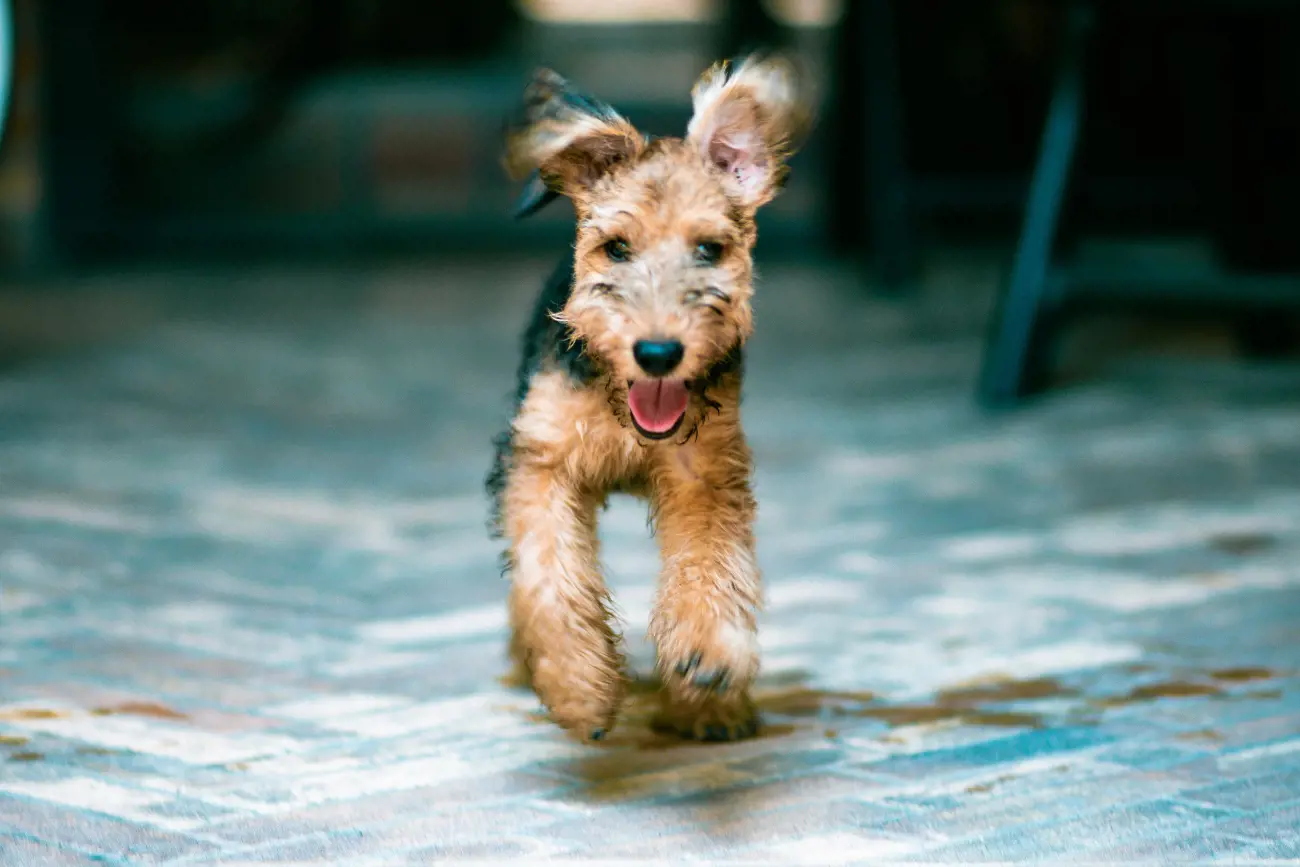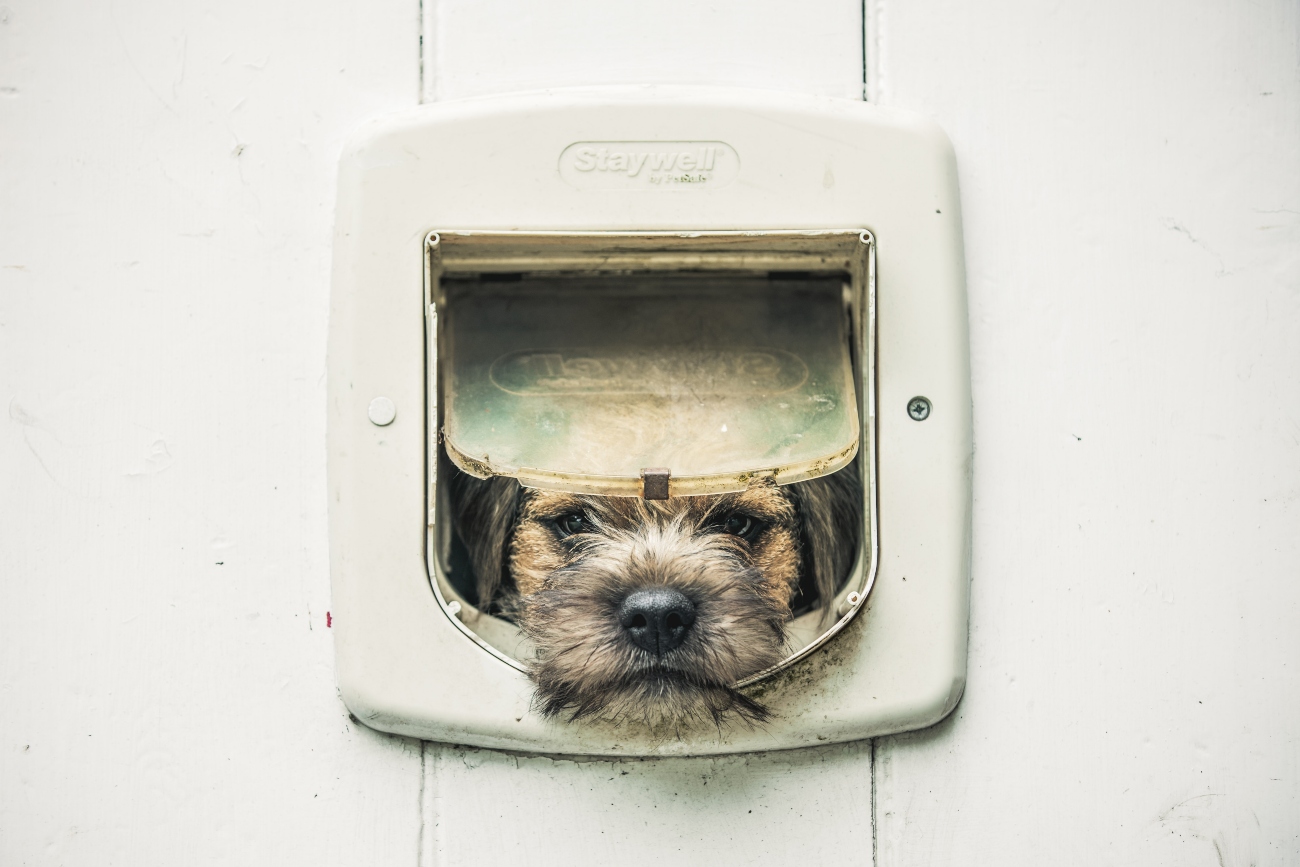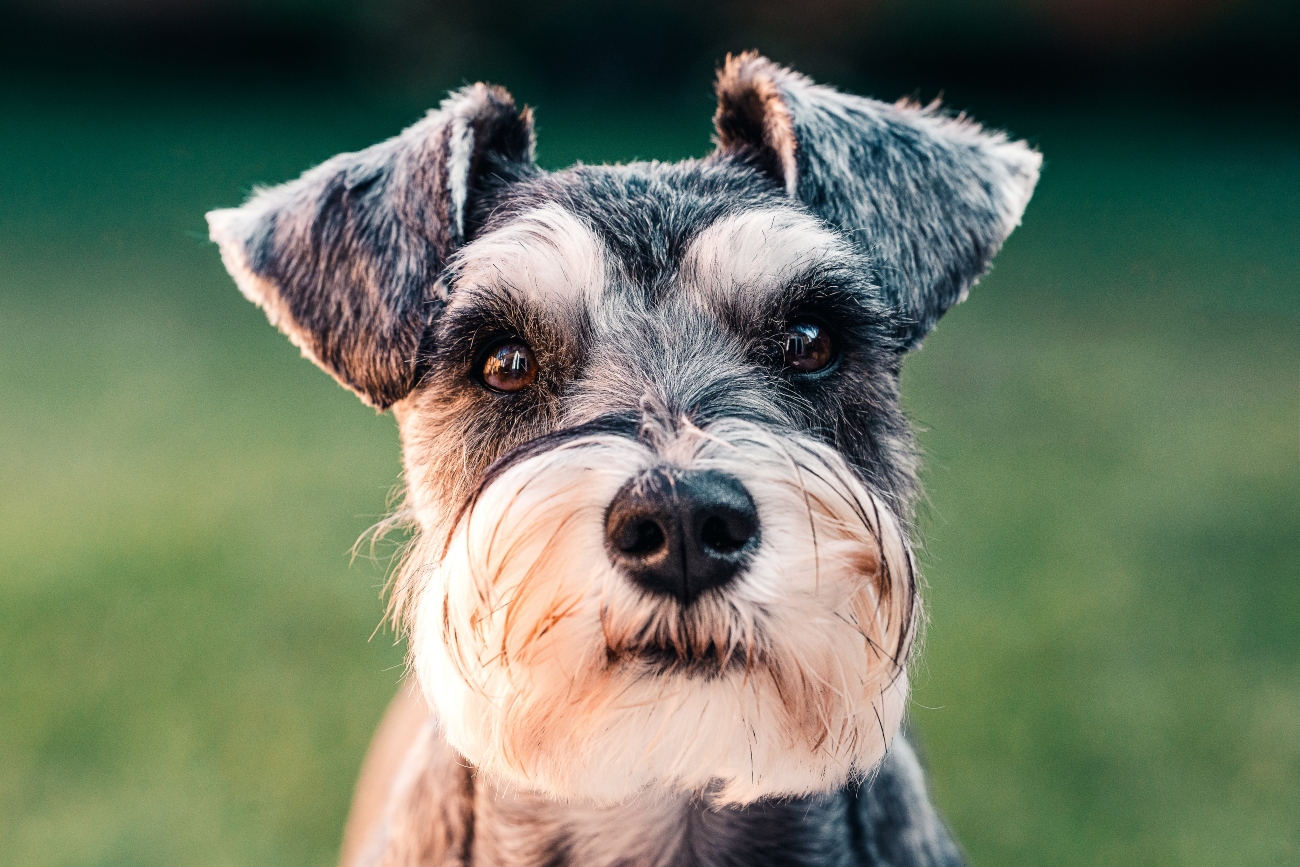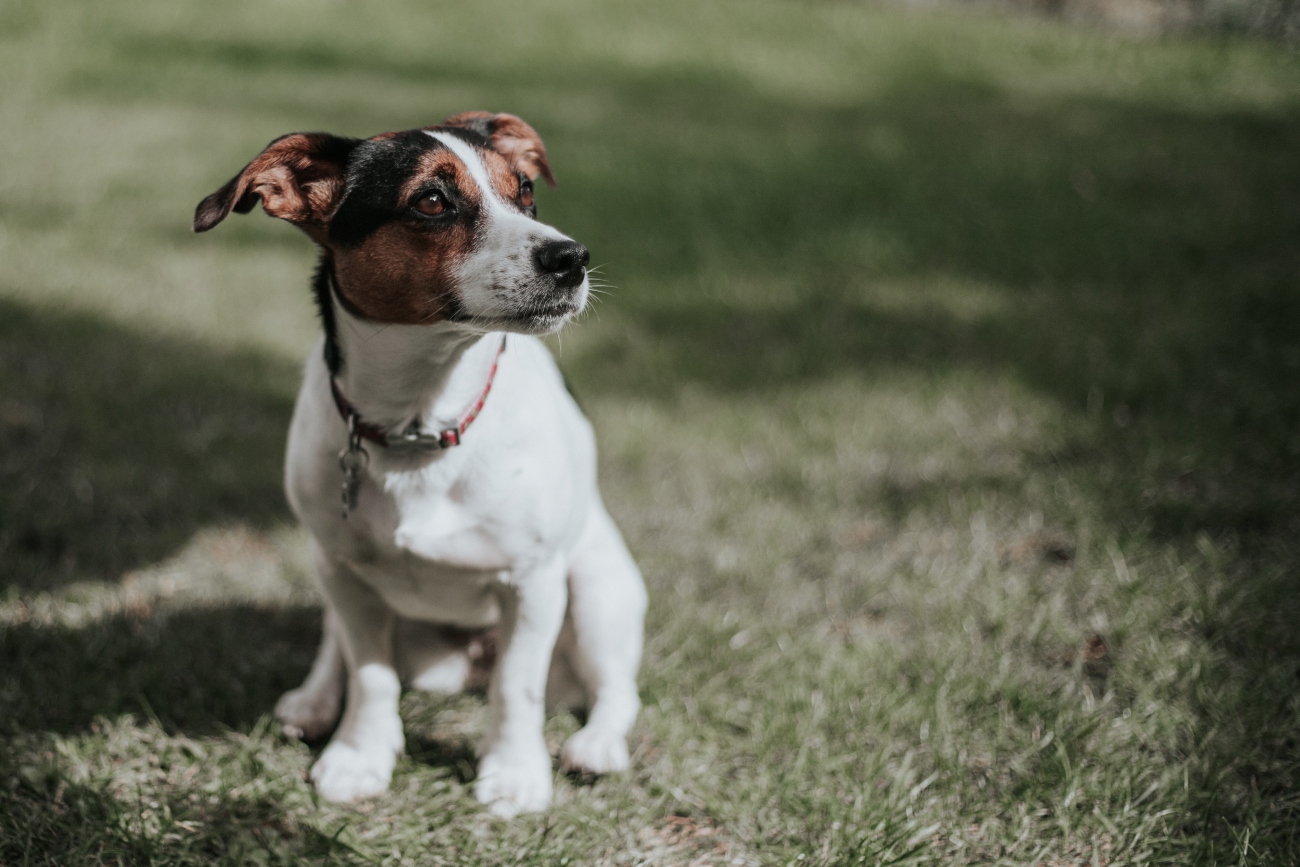12 of the best terrier breeds
15th March, 2022

Small but feisty, is it any wonder that our home-grown terrier breeds are some of the nation’s favourites dogs. But with so many terrier breeds to choose from it can be difficult to work out which is right for you and your family. To help you out, the team at Purely Pets have put together a list of 12 of the best terrier breeds for you to consider.
Choosing the right dog breed for you and your lifestyle is just as essential as choosing the right dog insurance. Here at Purely Pets, we can help you find suitable cover for your beloved friend in no time.

A brief introduction to terriers
With a fun-loving terrier by your side, you’re never going to have a dull day ever again. However, before committing to life with a terrier, there are some things you need to know about these lovable dog breeds.
Most terrier breeds you’ll come across have their origins in the UK where they were specially bred over hundreds of years to search out and kill vermin such as rats and mice. Some breeds were also designed to take on larger animals such as foxes, ducks, rabbits and even badgers. Whether in rural or industrial settings, either above or below ground, they were designed to hunt and be fearless in the chase.
Terrier dog breeds truly love life and generally have a lot to say for themselves! But as with any dog breeds they have such diverse backgrounds that there’s a lot of variety in their personalities and behaviour. While some are known to be feistier with big attitudes, others are much softer and less challenging. A large dog in a small body is an apt description for almost any terrier!
As smaller canines, terriers tend to be reasonably long-lived. But no matter how old your dog is, it’s never too late to start looking for dog insurance. There’s no upper age limit for dog insurance arranged through Purely Pets.
Is a terrier right for you?
Here are a few things worth considering before welcoming a terrier into the family.
- They need exercise and love games – Despite being comparatively diminutive, don’t let their size fool you. Terriers need plenty of exercise, at least an hour a day, if not more. And be aware that you need to enjoy games of all varieties. From tugging and digging to ripping and tearing, they love to play anything that satisfies their natural instincts. Remember, a busy terrier is a happy terrier!
- Start early when it comes to training – With an independence of character, obedience isn’t a traditional strength of terriers. But because they’re so smart and intelligent, if you show some perseverance from an early age then you should be able to train them well. Good recall is particularly important for terriers to learn early on.
- Take time to socialise your terrier – In general, terriers were bred to work best on their own, so there can be problems with some breeds if they haven’t been appropriately socialised.
- Some breeds require more regular grooming – Terriers are a diverse bunch of dogs. And while many have a hardy coat well suited to easy maintenance, some breeds will need more regular grooming. Particularly if you want them looking their best for a show!
- They can be vocal – Terriers aren’t known for being particularly quiet. While some will ‘talk’ less than others if you have nearby neighbours then some reward-based dog training wouldn’t go amiss.
- They’re friendly but often need their own space – Terriers are friendly dogs, but aren’t usually the type who love being held or cuddled. Because they were bred to work independently, they may not crave that close physical attention that other breeds do.
- Be careful around other pets – As we’ve already mentioned, terriers were bred to chase down and kill small animals. This can make them a hazard to other pets, particularly smaller rodents or rabbits. While many will learn to adjust, some will never be good housemates for smaller animals.
Are you right for a terrier?
It’s certainly a two-way street when it comes to living with any dog. Do you have what it takes to be a perfect terrier owner? Ask yourself these six essential questions before you commit.
- Do you want a full-on active dog?
- Are you happy with dogs who are independent and may not enjoy physical displays of affection?
- Do you live in a property where barking and noise isn’t going to be an issue?
- Are you happy to play games with your dog?
- If you have children, are they older or 'dog aware'?
- Do you have dog insurance in place to cover any unexpected vet bills?
If you gave a resounding yes, then go right ahead!
Fancy finding out which terrier is most like you? Which of these gorgeous tearaways could be your soulmate? Then what better way than to have a go at this fun quiz from HowStuffWorks!
12 of the best terrier breeds
Okay, we know this is going to be controversial! What terrier breed is ‘best’ is always going to get emotions running high. Loyal terrier owners will all have very strong opinions on the subject, but it really does depend on what you want to do with the dog.
Questions such as whether it will be a working dog, a family dog, or a bit of both? Or are you going to show it, or go running long distances with it? These plucky dogs have been so close to our hearts for generations that there’s bound to be a ‘best terrier breed’ for almost any situation. That said, here are just 12 of our favourites that we’ve picked out for you today.
Bedlington Terrier
Like many terrier breeds, the Bedlington began life in one geographical area before spreading across the country. In this breed’s case it was the Northumberland mining town of Bedlington in the 19th Century. With a distinctive arched look similar to a greyhound and fluffy coat they have a very lamb-like appearance. However, if you’re a rat, rabbit or fox they are far from sweet and gentle! Be aware, that gorgeous soft coat requires professional grooming attention every few months.
Health issues: According to the Kennel Club they can be prone to cracked and corny pads. While pet charity PDSA also warns owners to look out for eye and ear problems, copper toxicosis and total retinal dysplasia.
Miniature Schnauzer
Originating in Germany hundreds of years ago, the Standard Schnauzer is still a popular working farm dog and rat catcher in Europe. In the late 19th Century, the miniature version was first officially recorded. Inquisitive and playful, they get on well with children. They’ll need grooming several times a week. While their wiry coat will require professional grooming every few months.
Interestingly, in the UK the Miniature Schnauzer is recognised as a utility breed by the Kennel Club rather than a terrier. And in contrast to many other members of the terrier breeds, they’re actually known for obedience!
Health issues: The common concerns facing Miniature Schnauzers, include dental disease, obesity, anal sac impaction, vomiting and ear infection. However, these are also among the most common concerns for all dogs overall. The lack of any specific breed-related problems has led the Royal Veterinary College to label them one of the ‘most average’ dogs in the UK!

Staffordshire Bull Terrier
Originally bred for dog fighting in the Midlands in the 19th Century, the Staffie is a small, agile, and very strong dog with powerful jaws. Bred to show courage in a fight but to stay calm around humans, Staffies have a lot of fans.
Unfortunately, despite being typically friendly and sweet-tempered around people and with a love for children, the breed has gained a somewhat negative reputation.
The RSPCA says that while Staffies are still the breed most likely to end up at a rescue centre, the tide is turning in the public’s perception of this much-misunderstood breed. Highly intelligent and energetic, they love having a ‘job’ to do, and given the right home and care can make wonderful family pets.
Health issues: Generally, a very hardy breed indeed. But even the toughest dogs can have health problems once in a while. The Staffie-lovers over at theStaffordshireBullTerrier.com say the main problems to look out for are cataracts and a neurometabolic disorder called L-2 HydroxyGlutaric Aciduria (L-2HGA).
Airedale Terrier
When we said that terriers tend to be on the small side we certainly weren’t talking about the Airedale! Commonly considered the King of the Terriers, Airedales are the largest of the terrier breed group. First bred in Yorkshire, where they were known as the Bingley or Waterside terrier, they specialised in working on riverbanks to hunt ducks, rats and other river-based creatures.
This versatile dog breed has worked successfully in many roles, working as a sentry, police dog, Red Cross rescue dog and army messenger dog! During the First World War, one courageous Airedale called Jack carried a message through half a mile of enemy fire before finally succumbing to his wounds.
Health issues: Some health issues that occur in the Airedale include hip dysplasia, dermatitis, and hypothyroidism. As with any dog that’s tall and deep chested, they can be affected by bloat.
Cairn Terrier
A native breed in the Western Highlands and the Isle of Skye since the 17th Century, the Cairn Terrier is a small but high energy terrier that has changed remarkably little over the centuries. Bred by farmers for hunting vermin which were considered a threat to game, these courageous and clever dogs often worked in small packs.
They are small at around 30cm tall and weigh around 7kg, but are well muscled. They are named after those small outcrops of stones, so common in the highland moors. An apt name indeed! Their thick, shaggy, double coat is well suited to such a harsh and bleak environment.
If you’re wondering what Cairn Terriers are like, then remember Dorothy’s dog Toto from The Wizard of Oz! Calm, feisty and bold, he (in fact a she called Terry) was very much the quintessential Cairn.
Health issues: Cairn Terriers can suffer from hereditary eye disorders and like many small dog breeds can suffer from luxating patella (dislocating kneecap).
Jack Russell Terrier
The lively and ever-popular Jack Russell Terrier along with the similar Parson Terrier were originally bred in the mid-19th Century by English sporting enthusiast the Reverend John Russell. The terriers were bred to be quick enough to keep up with fox hounds but tough and compact enough to take on even the toughest vermin.
Standing around 25-30cm tall and weighing between 6kg and 8kg they prove you can fit a huge amount into a small package. They have white coats with patches of black, brown, or tan. Smooth-coated varieties need less grooming care than coarse-coated but neither are particularly high-maintenance.
Jack Russell Terriers like to make their opinions known and will need plenty of exercise and regular training. Loving and affectionate, they are great for very active families although their boisterous play can be too much for younger children.
Be aware, despite their height they can jump over fences with comparative ease. A dog insurance policy would cover you for loss by theft or straying. But it’s best to stop them escaping in the first place by ensuring your garden is properly secure.
Jack Terrier's have also been named as one of the cheapest dog breeds to insure. A major factor in the Jack Russell being reasonably cheap to insure is due to it's small size. Check out our Jack Russell insurance page to find out more information. If you want to learn more about other dog breeds that are cheaper to insure, read our blog on this.
Health issues: Jack Russells tend to be fit and healthy but can be more susceptible to pancreatitis and cruciate ligament disease.
Parson Russell Terrier
Very similar to the Jack Russell Terrier, but with longer legs, the Parson Russell Terrier stands around 35cm and weighs around 7kg. They can be either smooth- or coarse-coated. And are usually white with either tan, brown or black markings.
Good with people and intelligent, they tend to be more suited to families with older children. As you would expect they need plenty of physical exercise and mental simulation to keep them from becoming destructive in the home.
There is some disagreement as to whether the Parson Russell has a higher drive and intensity than the Jack Russell. Whatever the situation, fans of both claim their type is a truer representation of what their creator intended for these dogs — a hunter that’s both small and mighty!
Health issues: Generally hardy and long-lived, the breed can suffer from hereditary eye disorders.
Soft-coated Wheaten Terrier
Here is neither the time nor the place to debate about which is the ‘original Irish Terrier’ as many enthusiasts claim this title for their favoured breed. But it’s safe to say that the strong and versatile Wheaten is one of Ireland’s oldest breeds. Indeed, for hundreds of years Irish farmers have used Wheaten Terriers for every farm job imaginable including herding livestock, controlling vermin, personal protection and as gun dogs.
Gently waved or curled, that gorgeous silky coat will need to be groomed several times a week to keep it clean and tangle-free.
Health issues: Generally, a healthy breed but there are some conditions to watch out for. The British Soft-Coated Wheaten Terrier Club has produced detailed guidance on some of these conditions such as renal dysplasia, protein-losing nephropathy, protein-losing enteropathy, and canine degenerative myelopathy.
As with any pedigree dog, sometimes a special diet or complementary treatment is recommended by your vet. If you have dog insurance then you could potentially get help with the costs of that.
Norfolk Terrier
Until 1964, the Norfolk Terrier and the closely related Norwich Terrier were actually shown as one breed, the Norwich. However, following a campaign from lovers of both varieties the Kennel Club recognised both as separate breeds. For the uninitiated, the Norwich Terrier has sticking-up ears. While the Norfolk Terrier has ears that droop forward and tends to be stockier with a blunter face.
Health issues: Like many of the smaller breeds, Norfolk Terriers can suffer from luxating patella (kneecaps that dislocate).
Welsh Terrier
Bred to hunt badgers, foxes and otters in Wales, the cheery yet capable Welsh Terrier is one of our island’s more ancient breeds. With some suggesting that its origins lie as far back as pre-Roman invasion times! Whatever the truth, the Welsh Terrier is always ready for action, and makes an ideal companion and watchdog – as long as you like getting outside for exercise.
Health issues: Welsh Terriers can suffer from inherited eye conditions.
Border Terrier
Undoubtedly one of the most popular terrier breeds for people living in either town or country. They were originally bred in the 18th Century to help with fox hunting along the Northumberland and Scottish Borders.
Suitable as both a working terrier or as a family dog, Border Terriers make great companions and are high energy, but need training to get the best from them. They do vary in size, from 28-30.5cm tall, ranging between 5-7kg. Their coats can be rough or smooth and come in a variety of colours including, red, wheaten, grizzle and tan, and blue and tan.
Health issues: A strong and healthy breed. Eye disorders and epilepsy have been reported, but these are relatively rare.
Kerry Blue Terrier
Another popular Irish terrier with a variety of talents. Unsurprisingly given its name, this compact and muscular breed originated in the mountains of County Kerry, Ireland, more than a century ago.
Interestingly all Kerry Blue Terrier puppies are born black until around 18 months of age. With the silky coat gradually fading over time as the dog gets older. The final colour of an adult Kerry Blue Terrier can vary anywhere from a deep slate blue to a light blue-grey.
While Kerry Blues are now far more likely to be found in the show arena than on a working farm their strong and formidable character means they need some training to keep them and you out of trouble. And if you do decide on a show career for your Kerry Blue then make sure they’re covered by dog insurance in case of accidents.
Health issues: Can be susceptible to eye and skin problems.

Different types of terrier breeds
While we’ve included details of 12 of the best terrier breeds, it’s worth pointing out there are many to choose from. The Kennel Club currently recognises 27 terrier breeds, which are:
- Airedale Terrier
- Australian Terrier
- Bedlington Terrier
- Border Terrier
- Bull Terrier
- Bull Terrier (miniature)
- Cairn Terrier
- Cesky Terrier
- Dandie Dinmont Terrier
- Fox Terrier (smooth)
- Fox Terrier (wire)
- Glen of Imaal Terrier
- Irish Terrier
- Jack Russell Terrier
- Kerry Blue Terrier
- Lakeland Terrier
- Manchester Terrier
- Norfolk Terrier
- Norwich Terrier
- Parson Russell Terrier
- Scottish Terrier
- Sealyham Terrier
- Skye Terrier
- Soft Coated Wheaten Terrier
- Staffordshire Bull Terrier
- Welsh Terrier
- West Highland White Terrier
Other breeds related to terriers include: the toy breeds Yorkshire Terrier, Australian Silky Terrier, and English Toy Terrier (Black & Tan); the utility breeds Miniature Schnauzer, Tibetan Terrier and Boston Terrier; and the working breed Russian Black Terrier.
Dog insurance from Purely Pets
Whatever breed of terrier you decide upon, bringing one into your life can open up a whole world of adventure for you and your excitable pup. However, whether cuddling up by your side or chasing after balls and sticks, sometimes the unexpected can happen that requires veterinary treatment. Insurance cover is the ideal way to protect yourself from this financial worry.
We’ve designed 15 levels of lifetime dog insurance cover including cover for vets’ fees ranging from £1,000 to £15,000.
As well as a 24-Hour Vet Helpline, you also have round-the-clock access to an online policy management portal so you can manage your cover when it suits you.
Get a quote for Border Terrier Insurance at Purely Pets today.
Helpful Pages
Recent Posts
Pet Insurance Quote
- 98% claims paid *
- Claims paid directly to vets
- 24/7 vet video consultations
- Interest free monthly payments




